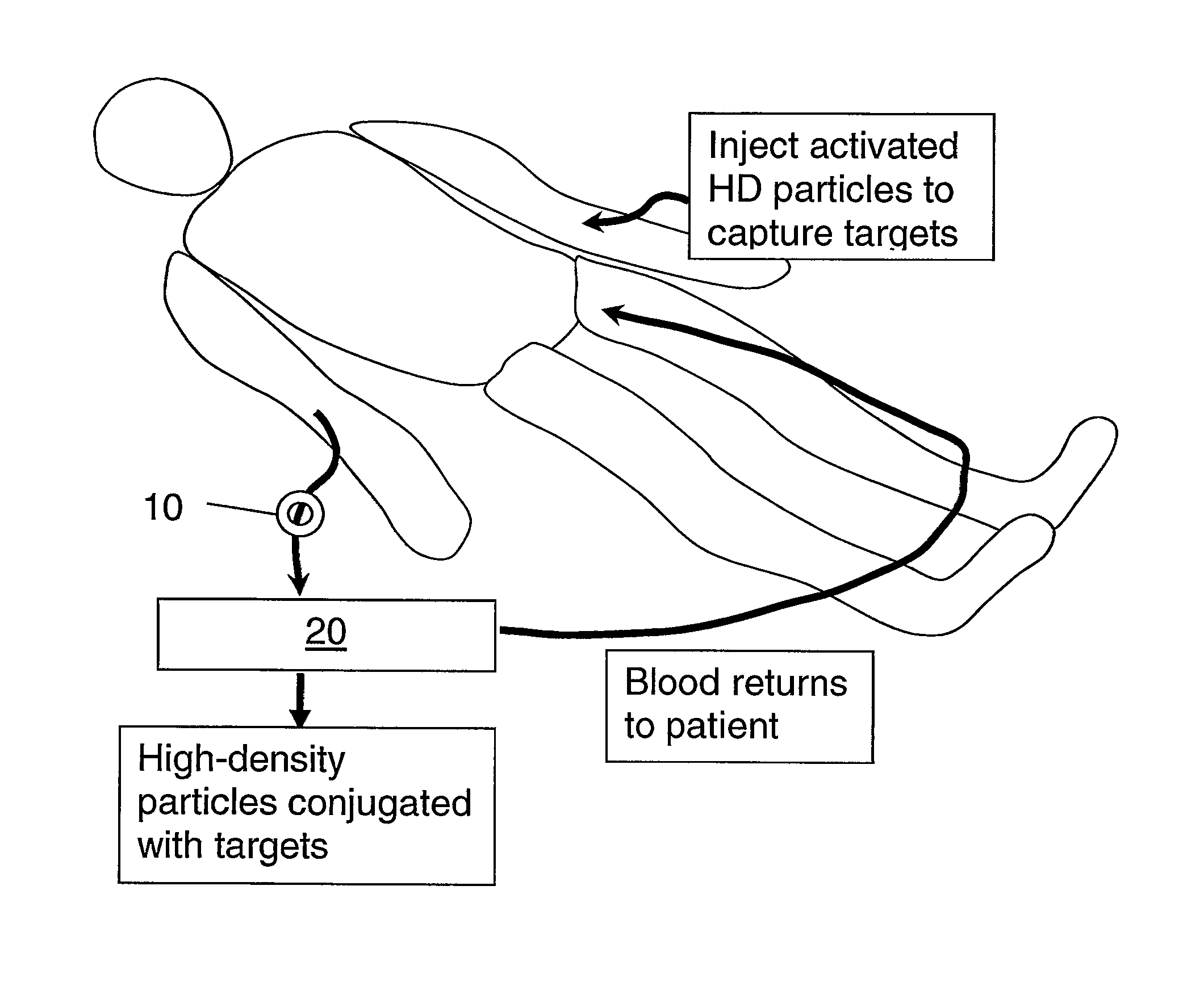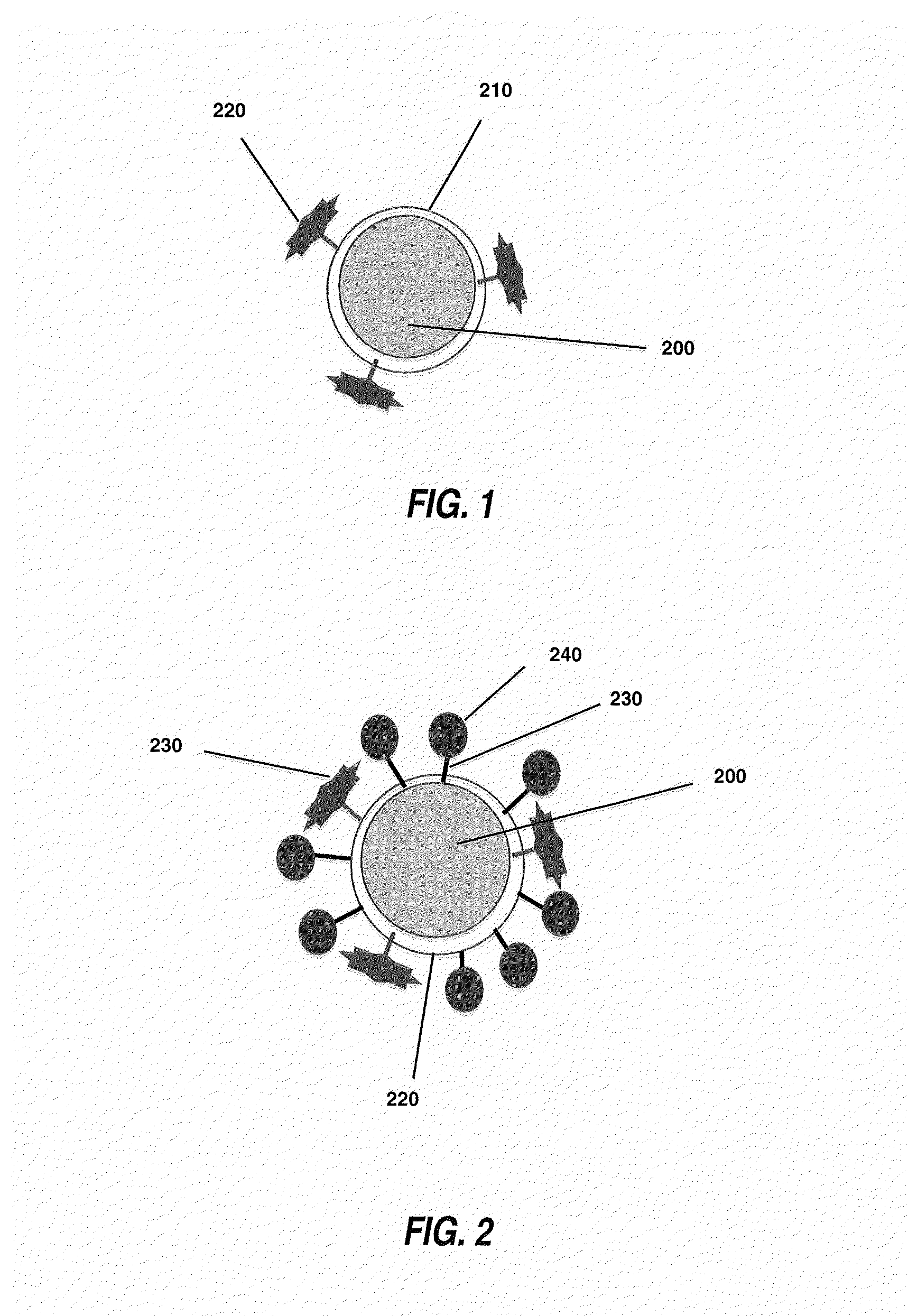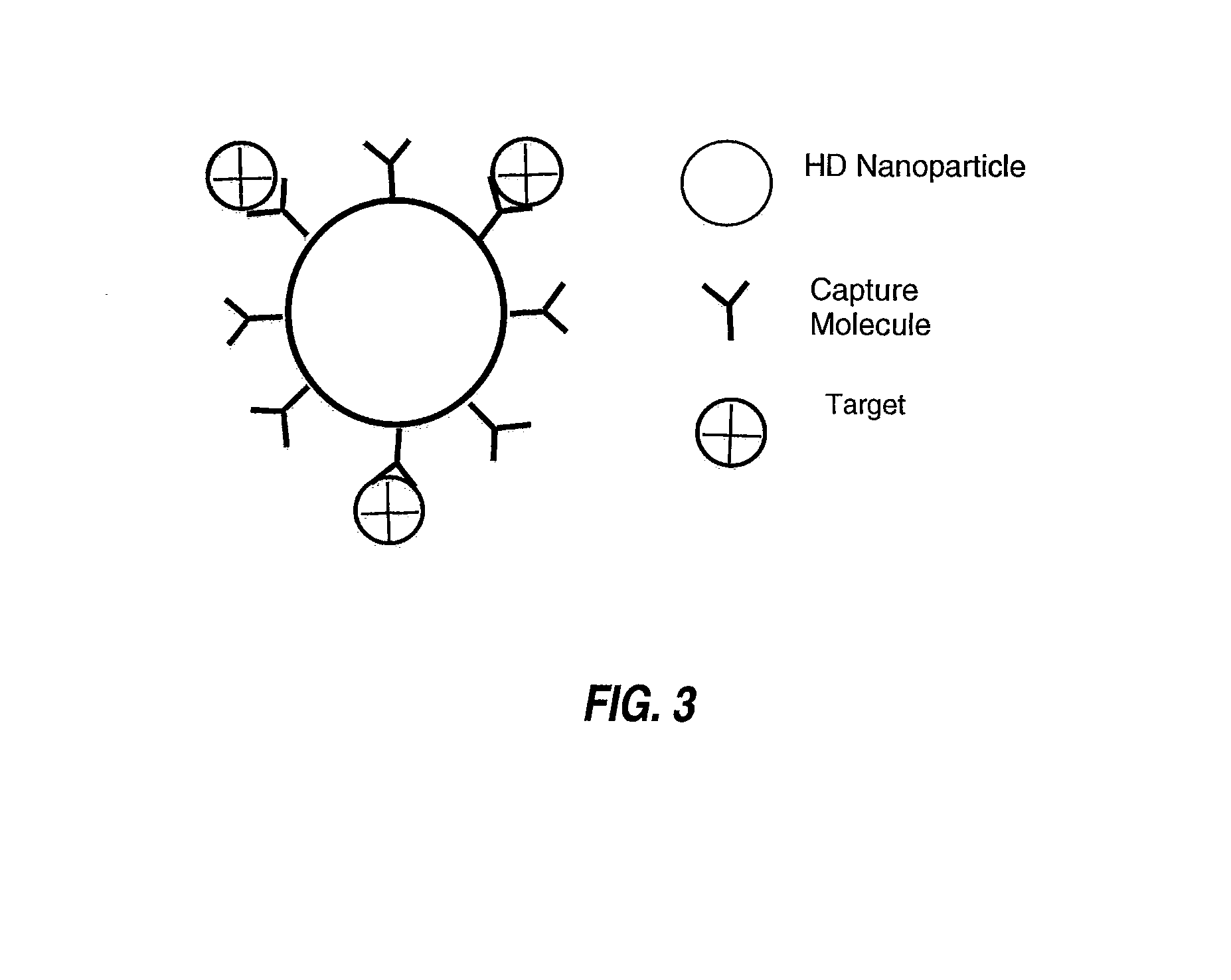Therapeutic retrieval of targets in biological fluids
a biological fluid and target technology, applied in the field of therapeutic retrieval of targets in biological fluids, can solve the problems of insufficient facilitation of medical intervention, abnormal composition accumulation in blood, body cannot no longer handle abnormal compositions,
- Summary
- Abstract
- Description
- Claims
- Application Information
AI Technical Summary
Benefits of technology
Problems solved by technology
Method used
Image
Examples
example 1
Oxygen Carrying Capacity of High-Density Particles
[0041]Retrievable high-density submicron particles (rNP) were formulated using 3.1 mmol 1,2-dioleoyl-sn-glycero-3-phosphocholine (DOPC), 163 μmol 1,2-dioleoyl-sn-glycero-3-phosphoethanolamine-N-[methoxy(polyethylene glycol)-1000], 20% Vol perfluoroctanylbromide (PFOB) and 80% Vol PBS. The lipids (in chloroform) were mixed, rotovaped to dryness and vacuum dessicated for 3 days. They were reconstituted in 120 ml PBS. PFOB (30 ml) was added and the mixture emulsified (5000 rpm) for 1 minute to form uniform emulsion. The emulsion was homogenized at 30K×psi×10 passes to form 230 nm particles. The formulation was split and half stored at room temperature (21° C.) and half stored at 37° C. These particles were used as oxygen carriers. A stop-flow apparatus was used to determine the oxygen capacity of the particles, although any method detecting the spectral change of deoxygenated hemoglobin upon mixing could have been used. At 20% Vol PFOB ...
example 2
Scavenging of Hb Using rNP-Hp and MB-Hp
[0042]To test Hb scavenging, normal human plasma from a blood bank was spiked with different amounts of Hb (0.4-2.0 nmol) from hemolyzed RBC to simulate the slightly hemolyzed blood of patients with sickle cell anemia (SCA). We used an accepted Hb detection assay from Arbor Assays (Ann Arbor, Mich.), which exhibits good sensitivity. We were unable to detect hemoglobin in the normal plasma obtained from a healthy donor, but detected Hb in the spiked samples as low as 1 μM. In this experiment, 250 μl of preps (Hp-rNP) using DOPC as the primary surfactant and Hp conjugated to the surface via a carboxy-terminal DOPE-derivative (DD-DOPE) with and without added PEGylation were used. Additionally, a preparation involving Hp conjugated to an activated NHS-Magnetic Bead (MB) was run alongside these preps. Hemoglobin was added to the test formulations and incubated for 30 min at room temperature by end-end mixing using a tube rotator. The rNP-Hp preps we...
example 3
High-Density Particles may be Retrieved Up to 100% with an Aphaeresis Instrument
[0043]High-density Magnetic Beads (Sera-Bind Speed Beads, Thermo Scientific, Freemont, Calif.) (MB) (2 g / ml, diameter=1.3 μm) were used to demonstrate their retrieval with the Cobe Spectra Aphaerseis System. The Cobe Spectra has a blood inlet and anticoagulant inlet ports. It also has three outlet ports, which recover the blood separated in the highest, middle and lowest densities. The ports are intended for RBC, buffy coat, and plasma. The middle port was closed and pH 7.4 buffered saline (PBS) was supplied through the anticoagulant port. MB (256 mg) were washed in PBS and suspended in PBS at a final volume of 500 ml. The weight of MB was determined after collecting them magnetically in an aliquot of suspension, removing the liquid and weighing the MB. Before aphaeresis, a 25 ml aliquot of the MB / PBS solution gave a reference MB weight of 12.7 mg. The apheresis instrument was primed with PBS as usual an...
PUM
| Property | Measurement | Unit |
|---|---|---|
| Flow rate | aaaaa | aaaaa |
| Concentration | aaaaa | aaaaa |
| Size | aaaaa | aaaaa |
Abstract
Description
Claims
Application Information
 Login to View More
Login to View More - R&D
- Intellectual Property
- Life Sciences
- Materials
- Tech Scout
- Unparalleled Data Quality
- Higher Quality Content
- 60% Fewer Hallucinations
Browse by: Latest US Patents, China's latest patents, Technical Efficacy Thesaurus, Application Domain, Technology Topic, Popular Technical Reports.
© 2025 PatSnap. All rights reserved.Legal|Privacy policy|Modern Slavery Act Transparency Statement|Sitemap|About US| Contact US: help@patsnap.com



